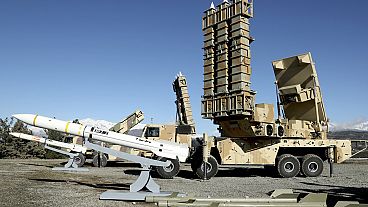By Marion Giraldo
EASTER ISLAND, Chile (Reuters) - In just 100 years, the emblematic stone sculptures that guard the coastline of Easter Island could be little more than simple rectangular blocks, conservation experts are warning.
The giant heads, carved centuries ago by the island's inhabitants, represent the living ancestors of Easter Island's Polynesian people, the Rapa Nui, and have brought it UNESCO World Heritage Site status.
Dozens of giant "Moai" statues dominate the hillsides surrounding the island's Rano Raraku wetland, but they are facing the threat of what locals describe as a kind of leprosy, white spots that are appearing on their iconic facades.
Caused by lichens, a marriage of fungi and algae, the patches eat away at the sculptures, softening them to a clay-like consistency and deforming their features.
The statues must also contend with coastal erosion, rising sea levels, high winds and damage from freely roaming livestock.
"I imagine that in a century more these Moai will basically be rectangular figures," Tahira Edmunds, adviser to Chile's National Forestry Corporation (CONAF) who has worked on cleaning the sculptures to remove the lichen, told Reuters during a visit to the island last month.
Archaeologist Sonia Haoa, an Easter Island native, is compiling an inventory of its heritage, including the Moai. He estimates that about 70 percent of the more than 1,000 statues are affected by lichens.
While the deterioration can appear shocking to visitors who flock to the remote volcanic island, some 3,500 kilometres (2,200 miles) from mainland Chile, Haoa said it was still possible to save them, through laborious cleaning and coating with sealant chemicals to curb moisture and prevent the porous volcanic rock from collapsing.
The most famous Moai groupings, such as the Ahu Tongariki, 15 statues arranged along a platform by the sea, and those scattered around the Ranu Raraku quarry, source of the stone, are already being cared for by heritage experts and the indigenous community's administrators of the Easter Island tourism park.
But the island has at least 30,000 archaeological sites spread across its 166 square kilometres, most of which are exposed to the environment.
To protect all the statues could cost as much as $500 million, and international help will be needed, according to local authorities and experts.
"You will never be able to entirely prevent the impact of time or the weather but you can hold it back, so that more people can see them first," Haoa told Reuters.
A BRITISH SOLUTION?
With no government fund specifically dedicated to preserving the island's heritage, the community allocates a large part of its income from tourism to repair and protection measures. Nonetheless, they say, resources are scarce.
The mayor of Easter Island has come up with an innovative solution: seeking royalty payments from nations whose explorers took some of Easter Island's statues into their possession centuries ago.
Among them is the Hoa Hakananai'a, a seven-foot (2.13 m) tall basalt statue that has become one of the British Museum's most popular exhibits since it was removed from the island by British sailors more than 150 years ago.
The Easter Island authorities and the Chilean government sent a delegation to London in November to request the return of the four-ton statue. The museum responded that it was happy to consider a long-term loan of the Moai.
Mayor Pedro Edmunds Paoa instead suggested the Hoa Hakananai'a could act as an "ambassador" for Easter Island, and Britain could keep it in return for regular payments to ensure the upkeep of its Easter Island counterparts. "We would win much more," he said.
Sonia Paoa agreed, saying that while Easter Island's heritage was more than just statues, their celebrity could be the key to sustaining it all.
"What do you leave to a 10-year-old boy, what will there be in Easter Island for the European or Chilean tourist to come see if we don't save them?" He asks. "It's the only oil well we have."
(Reporting by Marion Giraldo; writing by Aislinn Laing)

